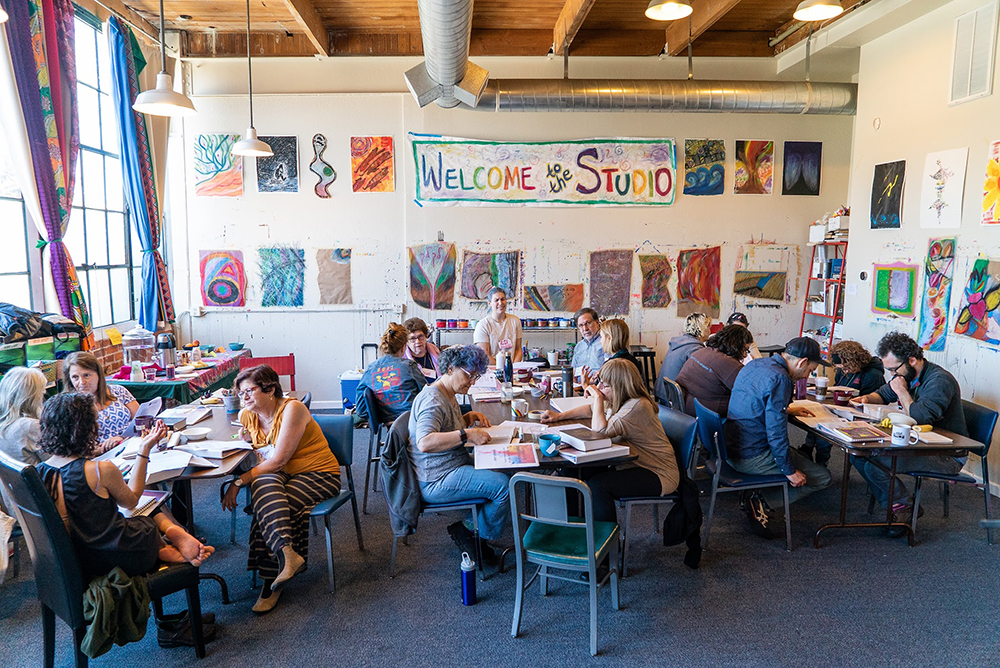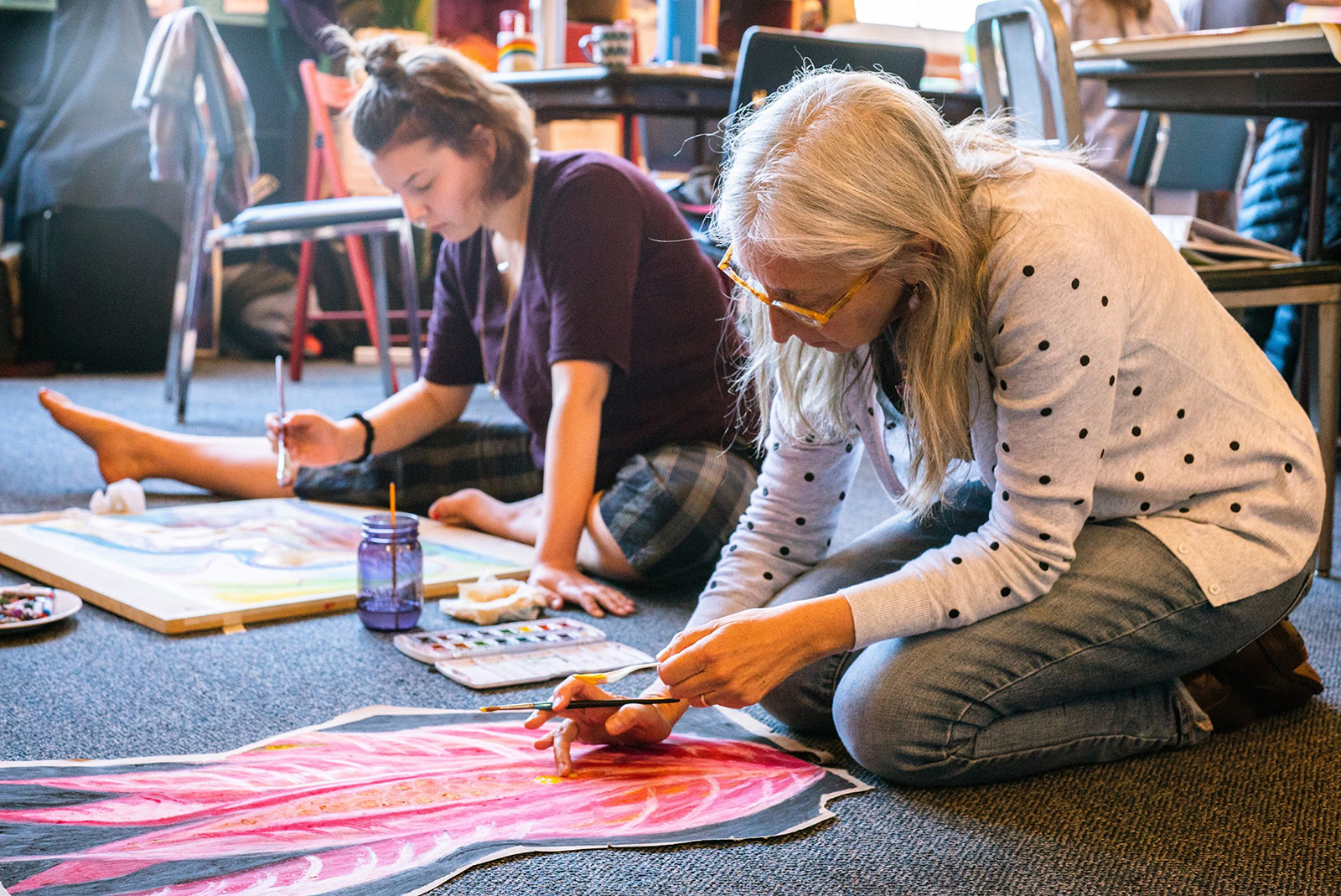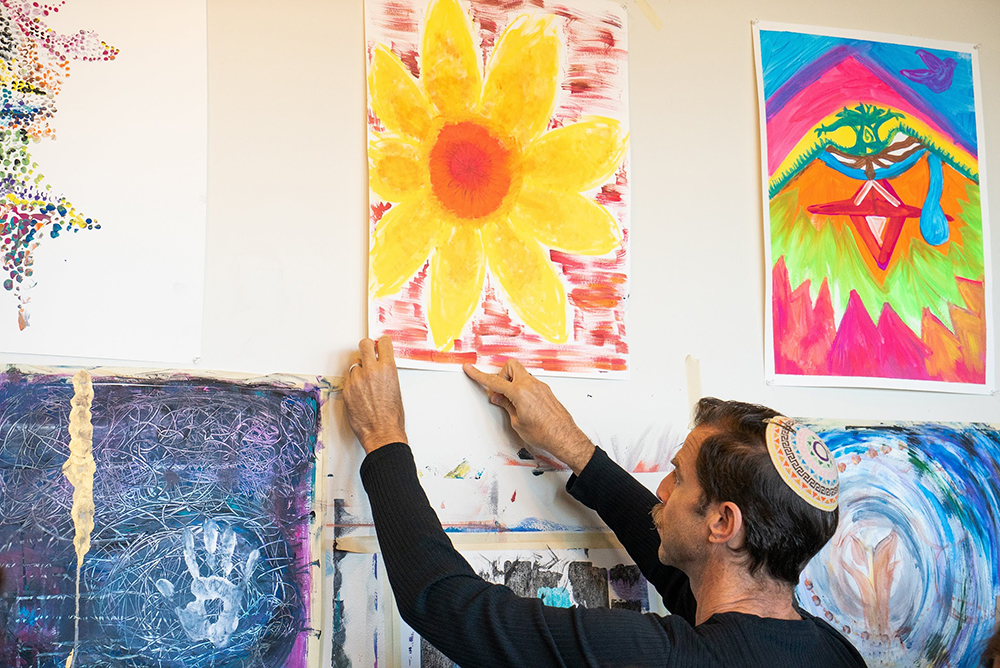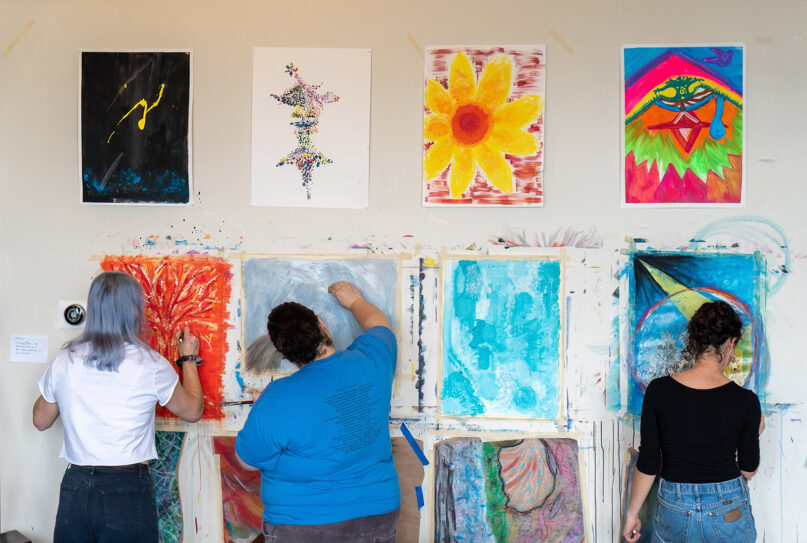(RNS) — Like many online Jewish learning platforms, this one started with a text — a High Holy Day litany called “Avinu Malkeinu,” sung at services between Rosh Hashana and Yom Kippur.
A group of 102 participants split up into smaller breakout rooms to consider a line from that text — “Create with us justice and loving kindness and bring mutual redemption.”
Participants were then prompted to pick up whatever instrument or found object they had at home — pen, pencil, crayon or brush — and make a mark on a piece of paper. And then another mark.
For some Jews, reemerging from a long pandemic and reengaging with their faith has meant making art. Not art with a capital “A,” the kind that hangs in galleries or museums, but the kind that might stir up creative potential and bring about a new awareness or connection with their spiritual selves.
The Jewish Studio Project, an 8-year-old nonprofit based in Berkeley, California, allows people a more meditative portal into Jewish practice, less intellectual and more intuition driven. The idea is to follow the energy or the pleasure of moving a line across the page and allowing the mind to relax and lead where it will.
Its 90-minute online sessions begin with discussion of a Jewish text and then move into a free-flowing creative practice. At a time when many places of worship have struggled to get people to return and reengage, this new practice — based on art therapy methods — is winning converts.
The Jewish Studio Project estimates it doubled its reach between 2019 and 2021, with the number of people engaging with the project, jumping from 7,000 to 14,000 last year.

People meet at the Jewish Studio Project in Berkeley, California. Photo courtesy of JSP
Ahead of Rosh Hashana, the Jewish New Year, which begins Sunday (Sept. 25), the project offered 11 High Holy Day-themed programs and daily prompts to help Jews spiritually prepare for the Days of Awe, the 10-day season of reflection and repentance culminating in Yom Kippur, the Day of Atonement.
Rosh Hashana celebrates God’s creation of the world as told in the book of Genesis. Creation is also the main theme of the Jewish Studio Project, which presupposes that all people are, as it puts it, “created creative.”
“We’re made in the image of that creative force and we take that to mean each and every one of us has a creative capacity,” said Rabbi Adina Allen, co-founder and co-director of the project. “We try to help people reclaim that power. This is a Jewish spiritual practice.”
RELATED: Why America needs the shofar
Americans of all faiths are increasingly turning to spiritual practices such as yoga, meditation, being in nature — or making art. That’s true in the Jewish community as well. A recent poll of Jewish voters found that 65% said they were not members of a synagogue or temple.
Many Jewish organizations are seeking ways to connect with with those who have disaffiliated or disengaged. Wilderness Torah, another Berkeley-based organization, provides earth-based Jewish programming that helps people renew their connection to Judaism in nature. Monthly women’s groups centered on the moon, called Rosh Chodesh, bring Jewish women together to better align their spiritual energy with the Jewish, moon-based calendar.
Making art is another.

Artists work at the Jewish Studio Project in Berkeley, California. Photo courtesy of JSP
“It worked really well with other mindfulness practices I’ve used in the past,” said Holly Smith, a 37-year-old Jewish woman living in Corvallis, Oregon, who found the Jewish Studio Project in the middle of the coronavirus pandemic. “It felt meditative to me. As we were talking, images would come to me and then as we started making art, I could let them come through me into whatever I was working with. It felt like it was connecting me to something bigger.”
Smith liked the work so much she applied for its creative facilitator training — a two-year program that teaches people to lead Jewish Studio Project programs in their locales (11 facilitators have graduated and 34 are in training).
The principles underlying the project are based on the methods developed by Allen’s mother, Pat Allen, an art therapist who has written widely about making art as a spiritual practice.
Pat Allen developed what she calls the open studio model, a safe space filled with found objects — scraps of fabric, tape, foil, glue and glue guns, markers and pencils — where people can begin making things.
Adina Allen, who earned her rabbinic ordination from Hebrew College in Newton, Massachusetts, adapted that approach by adding the study of Jewish texts — the Torah, liturgical prayers or rabbinic interpretations. That study is often done in small groups as a way to explore questions, reflect and prime the mind for creating art.

An artist hangs a piece at the Jewish Studio Project in Berkeley, California. Photo courtesy of JSP
Most of the art created through the Jewish Studio Project is in visual arts, because, unlike music or dance, it offers a lower bar of entry for people with no prior experience. No one is expected to have skill or talent, and Jewish Studio Project rules don’t allow critiquing other people’s work.
Jay LeVine, a rabbi in Seattle, Washington, said he had no formal experience with visual art but tried the practice with his wife, also a rabbi, and loved it.
“It pushed us out of our intellectual headspace,” LeVine said. “There was something really powerful about playing with artistic materials. It was not my forte, but it was fun in that new-to-us way.”
Like Smith, LeVine and his wife also signed up for the facilitator training, and he expects to bring the practice to his congregation, the Kavana Cooperative.
Since its inception, the Jewish Studio Project has also offered in-person High Holiday services — this year at the Jewish Community Center East Bay, as its leaders try to build connection and community, especially for those who have no other Jewish affiliation.
For Sarah Stone, a writing instructor at Stanford University’s Continuing Studies program, the Jewish Studio Project has become her main Jewish practice. She does not belong to a synagogue.
She said she finds the spirit of openness and exploration inspiring and has adapted some of the approaches to her teaching as well.
“We’re in a moment when there’s a lot of despair,” Stone said. “This particular work acts as a direct antidote to despair. It’s an informal, nurturing, regenerative space. There’s a hope to it.”
RELATED: Studies suggest spiritual practices may prompt people to get off the mat and engage





